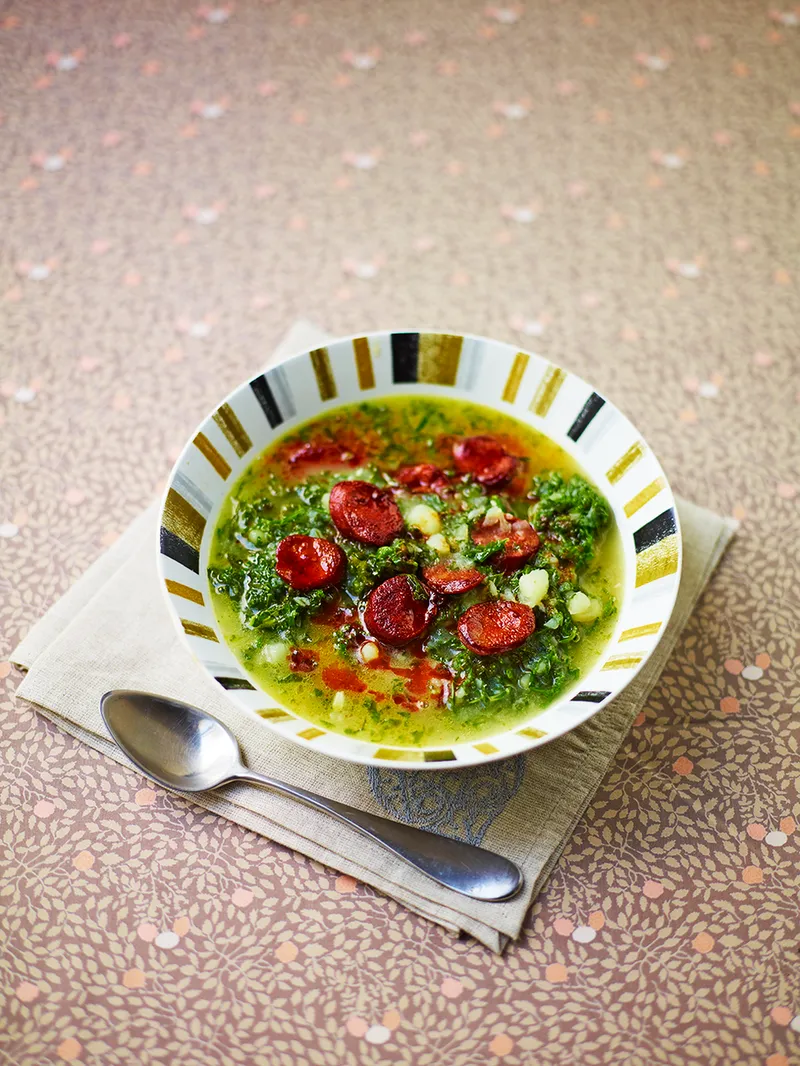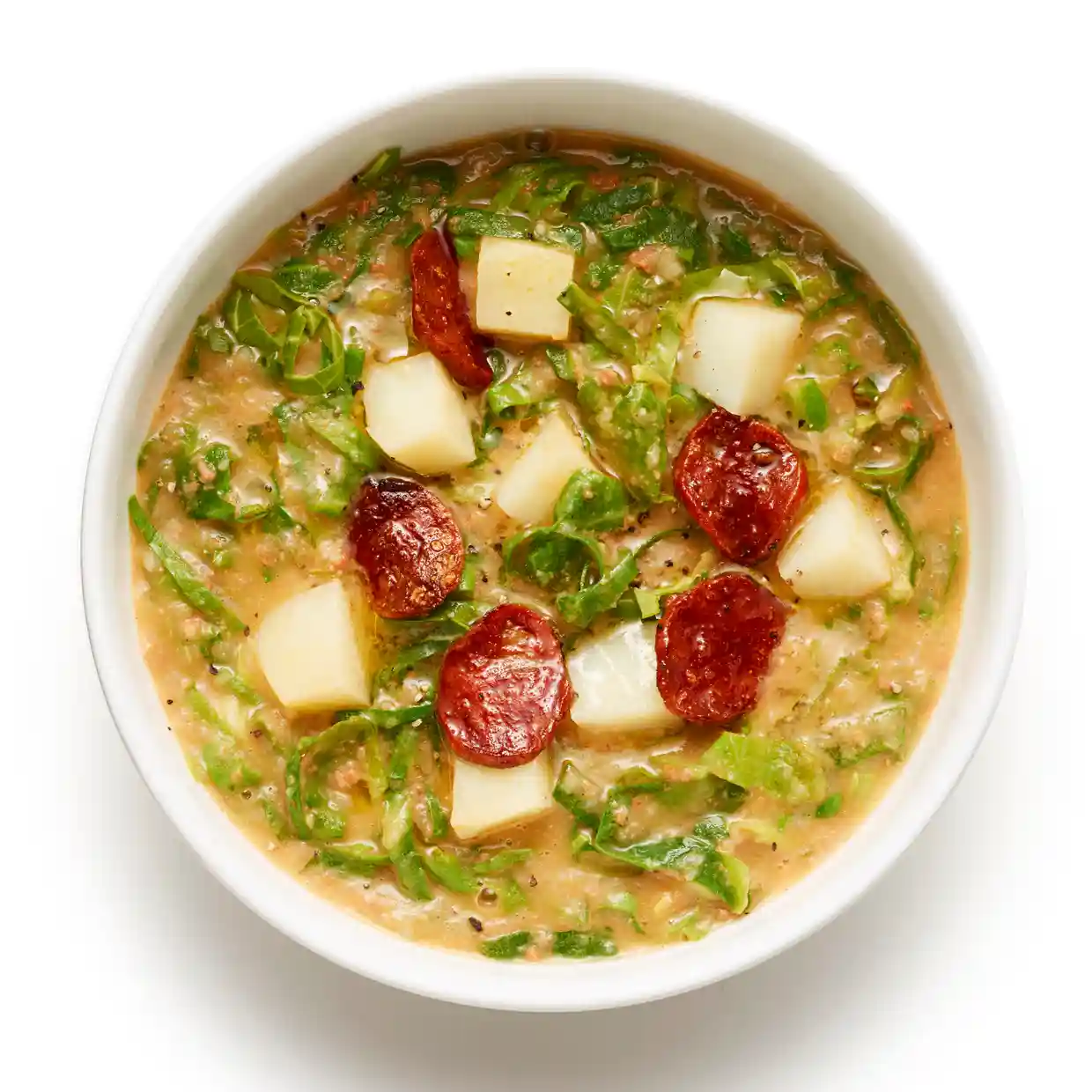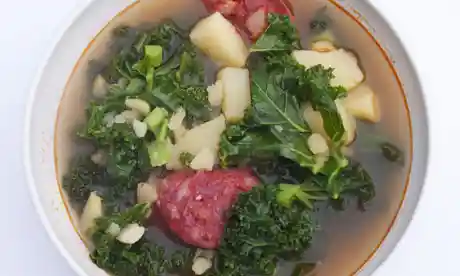Cabbage, potatoes, Portugal, soup - basic
- rosemary
- Sep 19, 2023
- 5 min read
"I have written this book to introduce Portuguese dishes to cooks in this country, rather than to tell them what to eat in Portugal." Ursula Bourne

I am talking here of caldo verde, and I have a worry that I have actually done this before because when I did my research I saw that various websites had already been seen by me - they were Google purple. And I have to say that yesterday, when I was flashing through endless past posts in order to delete some, I saw that I have often repeated myself. But then seeing as I don't remember I'm sure nobody else does.
So here I go again (possibly) with caldo verde - a rather trendy dish these days - which stems from two extraordinarily basic - and cheap ingredients. Cabbage and potatoes.

Cucina povera indeed. Well whatever that is in Portuguese. I shall come to why Portuguese in a moment. The picture above shows the basic ingredients in a Toronto shop where, in the Portuguese quarter, they sell the cabbage already shredded - finely as you can see. The correct cabbage to use is this - couve - which is difficult to find outside of Portugal. I suspect that caldo verde has become trendy because lots of cooks seem to think that kale, preferably cavelo nero, is the substitute to go for. Which rather mystifies me, because that is not really like this kind of cabbage. Admittedly here in Australia we don't seem to have this kind of cabbage, but in Britain they do and they also have spring greens - or collards - as the Americans call them. I notice that somebody suggested Chinese cabbage - bok choy - which I reckon might be closer. But then again, we are talking peasant food here and peasants make use of what they've got, so go for whatever green you fancy I reckon - silver beet, kale, spinach, ordinary cabbage ... But it has to be green:
"Caldo verde means "green soup," so if you aren't cooking your kale long enough to turn the soup green, you ain't making caldo verde!" J. Kenji López-Alt.

And shredding it fine helps in the process, as well as ensuring it's cooked because it's only added at the end and cooked for a few minutes. And here I come to the reason I am talking about this at all - first recipe - Caldo verde from Portuguese Cookery by Ursula Bourne who explains:
"In Portugal caldo verde is made from the leaves of a very large cabbage known as couve. The stalks and any tough parts are removed and the rest is shredded to almost a grass-like fineness. The firm, round cabbages grown in this country are suitable for caldo verde, but whatever kind is used it must be finely shredded, as it is hardly cooked at all." Ursula Bourne
Indeed her recipe for this dish is so simple - even simpler than some of Elizabeth David's that I reproduce it in full here. Well you won't find it online:
"3 medium potatoes; 1 1/2 pints water; 2 tablespoons olive oil; 1/2 lb cabbage, finely shredded; seasoning
Cook the potatoes in the water with a teaspoonful of salt. Remove, mash and return to the water, along with the oil and cabbage. Boil, uncovered, for 3 minutes. Season to taste."
Yet somehow something so very, very simple and modest has become trendy. Even back when this book was written (1973) the author thought that it was a bit overdone in its native Portugal:
"It can be very good, but it is unfortunate that it is encountered so often, for even something good can pall after a time." Ursula Bourne
Which is why cooks and chefs fiddle with these 'ur' recipes and make them trendy, and a little bit more complicated, whilst still claiming its basic and easy nature:
"The only way you could really make this any easier is if you could convince someone to make it for you. Even that might take more effort." J. Kenji López-Alt.
The main way most of them tart it up is with chorizo - or even more classily chouriço - the Portuguese version - and so they then argue about when to add it - at the beginning and again at the end; cooked in with the potatoes; cooked separately and just added as garnish ... Then there's the olive oil - how much - anything from Ursula Bourne's two tablespoons to half a cup. Additions - onions, celery, garlic, bay leaves - I'm sure there are others. Disintegrated potatoes or chunks, or a mix? So here a few of what I found: Serious Eats; Leite's Culinaria; The Daring Gourmet (lots of olive oil in this one); Jamie Oliver; Felicity Cloake and Nigel Slater who didn't shred his greens or mash his potatoes and added cannellini beans as well - so when does it stop being the original thing? His recipe can be found on a website called The Boy Who Ate the World.
Take your pick as to how green, how much sausage, and how smooth your soup is.

To conclude with another aspect of basic. The book itself. It's another one of those old Penguin cookery books with just line drawings, such as this one to illustrate the chapter headings. And on this I found a response on Ask MetaFilter, to a request:
"In need of old-fashioned unassuming recipe books."
This particular book was mentioned, along with a more general statement that I thought worth reproducing:
"They are called 'Penguin Handbooks' and semi-easily found for cheap second-hand at least in Canada. I have about ten of them now and they are unfailingly great, and, I think exactly what you are after. No exotic, no processed, focus on good labour-intensive classics/basics, rudiments explained, a bit of background chatter and then off to the food. It makes my week whenever I pick up a new one" kmennie/Ask MetaFilter
I wonder whether people think like that these days. We are so fixated on the image, which is, increasingly, becoming a moving one and shorter and snappier too. I find even I struggle to really look into books such as this. Today, for example I have looked no further than the Introduction and the first recipe.
I did wonder a little about the author. I can find no photograph, but discovered that she wrote another book on Spanish food and also one on East Anglian village signs - which is tantalising. In this book, and probably in her other one, there was no explanation as to why she was writing a book about Portuguese food and I found that statement about writing for you to cook at home rather than discover food in Portugal a bit intriguing. Surely you can do both. She wrote in a fair degree of detail about the regions of Portugal and so has obviously been there, but she does not write of personal memories of places, meals, markets. I picture an English countrywoman of the old-fashioned kind - she was born in 1921 - who somehow or other found herself enraptured by the Iberian Peninsula. I would like to know more about that.
So should I keep this book? Is it a little treasure? I think I bought it so that I could find out more about the food of Portugal, but I do not remember cooking much from it. A passing interest. For the street library or back on the shelf?
I could try the soup however, next time is wet and miserable.












Comentários